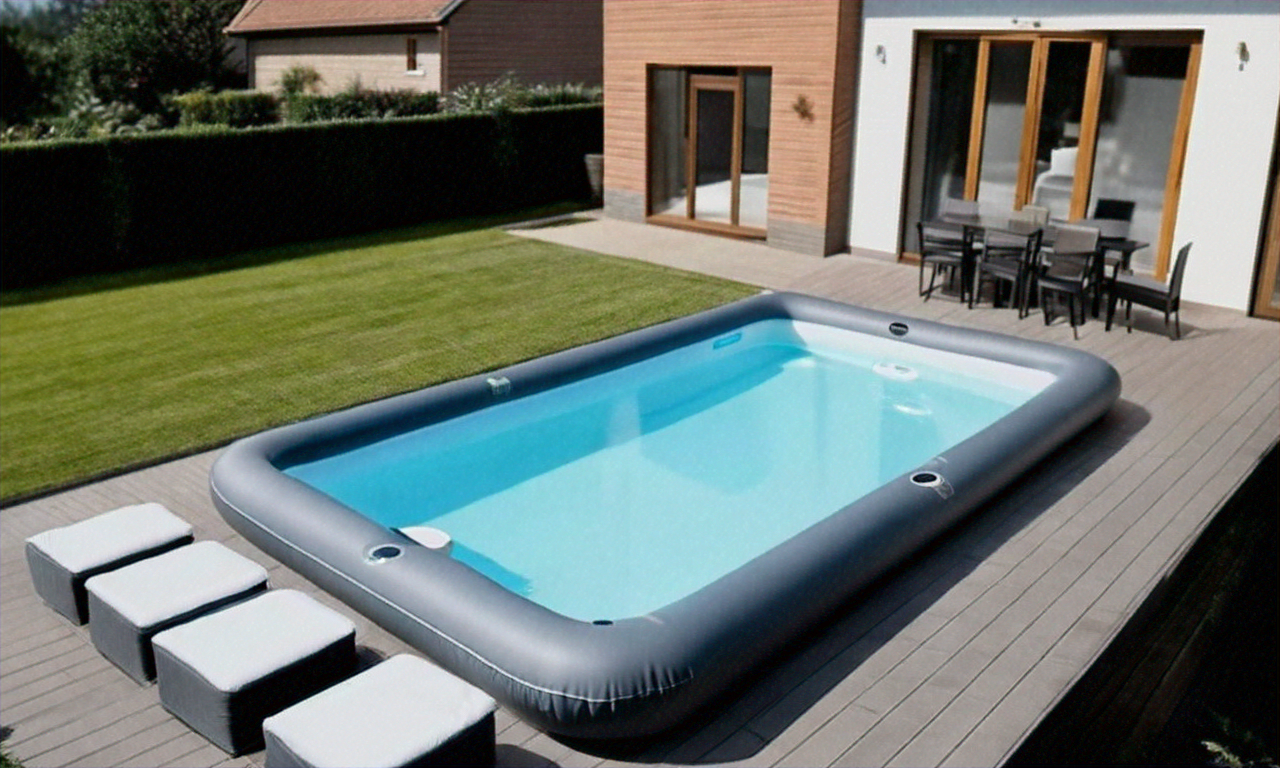Pools: Enhancing Your Backyard with a Refreshing Oasis
A swimming pool can transform your backyard into a personal paradise, offering a refreshing retreat from the heat and a perfect spot for relaxation and entertainment. Whether you're considering an inground pool or exploring various outdoor water features, adding a pool to your property can significantly enhance your lifestyle and home value. Let's dive into the world of pools and explore the options available for creating your ideal backyard oasis.

Moreover, a well-designed pool can significantly boost your property’s aesthetic appeal and market value. It transforms your backyard into a luxurious outdoor living space, perfect for relaxation and entertainment. For families with children, a pool offers endless hours of fun and can help improve water safety skills. Additionally, having a private pool eliminates the need to visit crowded public swimming areas, providing a more hygienic and convenient option for aquatic activities.
What types of inground pools are available for homeowners?
When it comes to inground pools, homeowners have several options to choose from, each with its own set of advantages:
-
Concrete pools: These are highly customizable and durable. They can be built in any shape or size, making them ideal for unique designs or challenging terrains. While they have a longer construction time, concrete pools offer longevity and the ability to incorporate various features like beach entries or intricate tile work.
-
Fiberglass pools: Pre-manufactured and quick to install, fiberglass pools come in a variety of shapes and sizes. They have a smooth, non-porous surface that’s easy to clean and resistant to algae growth. Fiberglass pools are known for their durability and low maintenance requirements.
-
Vinyl-lined pools: These pools offer a balance between customization and affordability. They consist of a steel or polymer frame with a custom-fit vinyl liner. Vinyl-lined pools can be built in various shapes and are generally quicker to install than concrete pools. However, the liner may need replacement every 7-10 years.
How can you incorporate water features into your outdoor pool design?
Water features can elevate your pool design, adding visual interest and soothing sounds to your backyard oasis. Some popular options include:
-
Waterfalls: Whether natural-looking rock waterfalls or sleek, modern cascades, these features create a stunning visual focal point and provide a relaxing ambiance.
-
Fountains: Pool fountains come in various styles, from simple sprayers to elaborate sculptures. They add movement to the water surface and can create a cooling mist effect.
-
Infinity edges: Also known as vanishing edges or negative edges, these create the illusion that the pool water extends to the horizon, offering a luxurious and modern look.
-
Bubblers: These underwater fountains create gentle bubbling effects, adding both visual interest and a soothing sound to your pool area.
-
LED lighting: While not a water feature per se, strategic lighting can dramatically enhance the appearance of your pool and its water features, creating a magical atmosphere for evening swims and outdoor entertaining.
What are the maintenance requirements for a backyard swimming pool?
Maintaining a backyard swimming pool is essential for ensuring clean, safe water and prolonging the life of your investment. Regular maintenance tasks include:
-
Water testing and chemical balancing: Check and adjust pH levels, chlorine, and other chemicals at least weekly to prevent algae growth and ensure safe swimming conditions.
-
Cleaning: Skim the surface daily to remove debris, brush the walls and floor weekly, and vacuum the pool as needed to keep it clean.
-
Filter maintenance: Clean or backwash your pool’s filter system regularly to ensure efficient water circulation and filtration.
-
Water level monitoring: Maintain proper water levels, typically midway up the skimmer opening, to ensure optimal filtration and pump function.
-
Equipment checks: Regularly inspect pumps, heaters, and other pool equipment for proper functioning and address any issues promptly.
-
Seasonal maintenance: Prepare your pool for winter if you live in a colder climate, and perform a thorough cleaning and equipment check when reopening for the swimming season.
How much does it cost to install and maintain an inground pool?
The cost of installing and maintaining an inground pool can vary significantly based on factors such as pool size, materials, location, and additional features. Here’s a general overview of costs associated with inground pools:
| Pool Type | Average Installation Cost | Annual Maintenance Cost |
|---|---|---|
| Concrete | $50,000 - $100,000 | $2,500 - $5,000 |
| Fiberglass | $45,000 - $85,000 | $500 - $1,500 |
| Vinyl | $35,000 - $65,000 | $1,000 - $2,500 |
Prices, rates, or cost estimates mentioned in this article are based on the latest available information but may change over time. Independent research is advised before making financial decisions.
Installation costs typically include excavation, pool construction, basic decking, and standard equipment like pumps and filters. Additional features such as heaters, diving boards, or elaborate landscaping will increase the overall cost. Maintenance costs cover chemicals, utilities, and routine upkeep. Keep in mind that vinyl liners may need replacement every 7-10 years, which can cost $3,000 - $5,000.
In conclusion, a swimming pool can be a wonderful addition to your backyard, offering a refreshing escape and a hub for outdoor entertainment. By carefully considering the type of pool, design features, and maintenance requirements that best suit your needs and budget, you can create a stunning aquatic retreat that enhances your home and lifestyle for years to come. Remember to consult with local pool professionals to get accurate estimates and advice tailored to your specific situation and location.






